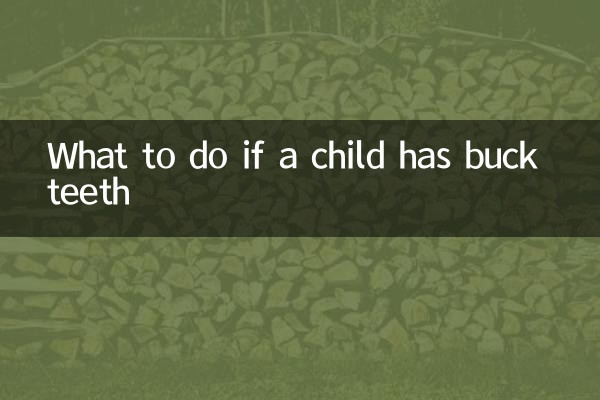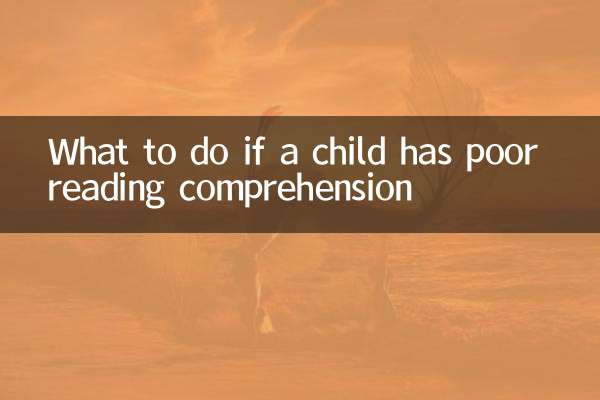What should I do if my child has buck teeth? Comprehensive analysis of causes, prevention and treatment methods
Recently, the topic of children's oral health has once again become the focus of parents' attention, especially the issue of "children's buck teeth". Buck teeth not only affect the child's appearance, but may also cause chewing function abnormalities, pronunciation disorders and even psychological problems. This article combines popular discussions across the network for nearly 10 days to sort out the causes, preventive measures and treatment plans of buck teeth, and presents them with structured data to help parents respond scientifically.
1. Common reasons for buck teeth

According to pediatric dentists and orthodontic experts, the causes of buck teeth can be divided into two categories: congenital and acquired:
| type | Specific reasons |
|---|---|
| Congenital factors | Genetic (one or both parents have buck teeth), abnormal jaw development |
| Acquired factors | Long-term oral breathing, finger sucking/lip biting habits, premature loss of baby teeth, and bad tongue position |
2. How to detect buck teeth early?
Parents can use the following signs to determine whether their children may have buck teeth problems:
| symptom | Performance |
|---|---|
| Extratotomy of teeth | The upper front teeth are obviously leaning forward, and the lower lip is pushed up when closed |
| Abnormal facial proportions | Looking at the side, your chin is retracted and your lips cannot be closed naturally |
| Functional issues | Difficulty in chewing and unclear pronunciation (such as "f" and "v" sounds) |
3. Preventive measures for buck teeth
Intervention from infancy can effectively reduce the probability of buck teeth:
| Age group | Prevention methods |
|---|---|
| 0-3 years old | Avoid using pacifiers for a long time and correct finger sucking habits |
| 3-6 years old | Treat oral respiratory inducement such as rhinitis, and regular oral examinations |
| 6-12 years old | Dealing with deciduous teeth retention in time and wearing gap holder |
4. Treatment plan for buck teeth
Treatment methods vary according to the age and severity of the child:
| Treatment phase | Applicable method | Best Age |
|---|---|---|
| Early intervention | Muscle function corrector (such as MRC), arch expansion device | 5-10 years old |
| Permanent dental correction | Traditional metal brackets, invisible remedies (Invisible) | Over 12 years old |
| Severe bone buck teeth | Orthojan surgery combined with orthodontic treatment | After 18 years old |
5. Parent FAQs
1.Q: Does the child need to correct the external protrusion of the incisor after changing teeth?
A: Temporary buck teeth may occur in the early stage of tooth replacement. It is recommended to observe for 6-12 months. If there is continuous outbreak, medical treatment is required.
2.Q: How much does it cost to correct buck teeth?
A: Depending on the treatment method, the price varies greatly: the traditional bracket is about 15,000-30,000 yuan, the invisible correction is 20,000-60,000 yuan, and the functional correction device is 8,000-20,000 yuan.
3.Q: How to care during correction?
A: Use fluoride toothpaste to brush your teeth twice a day, clean with floss/dressers to avoid gnawing on hard objects, and follow up regularly.
Conclusion
The correction of buck teeth is a systematic project, and the earlier the intervention, the better the effect. It is recommended that parents take their children for oral examinations every six months and communicate with the orthodontic doctor in time when they find problems. Through scientific treatment and the cultivation of good habits, most children can have neat and healthy teeth.
(Note: The data in this article are compiled from the Chinese Stomatology Association, Weibo's popular topics #Children's Orthodontics# and Zhihu's high-profile answers in the field of parenting. The statistical period is from October 1 to 10, 2023.)

check the details

check the details